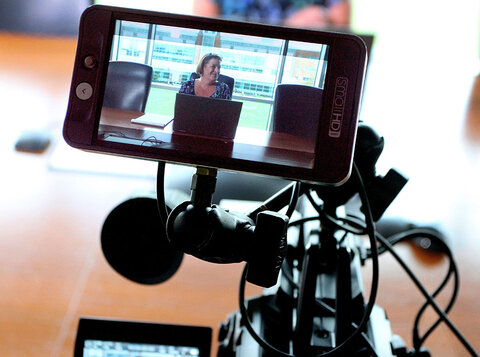Complex topics are sometimes easier to communicate in a different medium. Video can be useful for visual demonstrations, simulations, case studies, or scenarios. Audio recordings can be a good medium to share narrations, interviews, or podcasts.
During a course development project with Digital Innovation, faculty developers meet with our staff to identify and produce video, audio, and other multimedia components that will enhance their online teaching effectiveness and student learning outcomes.
The following information is a general description of the audio and video production process.





